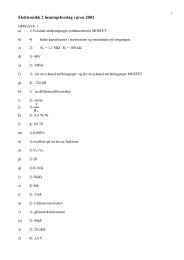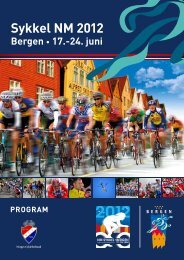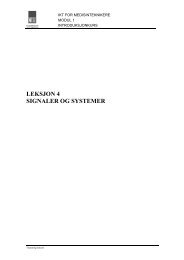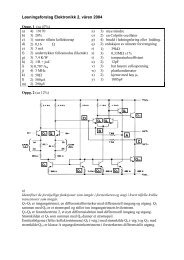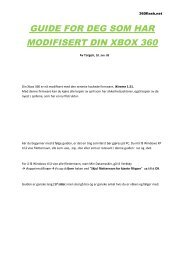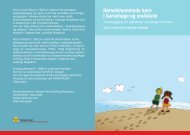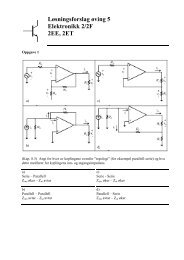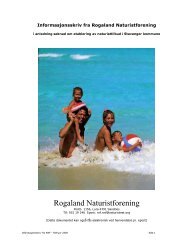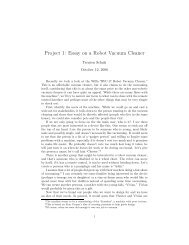The Online World resources handbook
The Online World resources handbook
The Online World resources handbook
You also want an ePaper? Increase the reach of your titles
YUMPU automatically turns print PDFs into web optimized ePapers that Google loves.
Web/Internet tools and pointers http://home.eunet.no/~presno/bok/v6.html<br />
TCP/IP<br />
Transmission Control Protocol/Internet Protocol. Communications protocols that<br />
internetwork dissimilar systems connected to the Internet. TCP/IP supports services<br />
such as remote login (telnet), file transfer (FTP), mail (SMTP and POP).<br />
An old FAQ is available at:<br />
http://www iso8859 5.stack.net/pages/faqs/tcpip/tcpipfaq.html<br />
You should also take a look at<br />
ftp://rtfm.mit.edu/pub/usenet/news.answers/internet/tcp ip<br />
Telnet<br />
$ SURJUDP RQ WKH ,QWHUQHW WKDW DOORZV \RX WR H[HFXWH FRPPDQGV RQ UHPRWH FRPSXWHUV<br />
as though you were logged in locally. You can browse menus, read text files, use gopher<br />
services, and search online databases. Sometimes, you can join live, interactive games<br />
and chat with other callers. Usually, you cannot download files or list file directories.<br />
To set up a telnet connection, you need to know the name of the computer site you<br />
want to access and have a valid user name and password for that site.<br />
<strong>The</strong> site's name can be in words, like "VM1.NODAK.EDU," or a numeric address,<br />
like "134.129.111.1". Some services require that you connect to a specific "port" on the<br />
remote system. Enter the port number, if there is one, after the Internet address.<br />
Some telnet sites allow for guest logins. Guest accounts typically are restricted to<br />
the types of actions they can perform during a session. Although your telnet session is<br />
actually running software directly on the site's telnet computer, you will be running a<br />
program that prevents you from accessing the general capabilities of that computer.<br />
Once you are connected to a telnet site, you will often see a menu driven system which<br />
is under the control of the telnet site, and guides you through the actions you may<br />
perform at that site.<br />
Note: If you get a return message saying that the host was unknown or unavailable,<br />
first check if your address syntax was correct. If it is, try later. Also, your telnet address<br />
may have changed.<br />
Another common use of telnet is for users to be able to log into their computers<br />
from remote locations. In this case, users enter their own user names and passwords and,<br />
therefore, have the same user privileges they would have when logged in without using<br />
telnet.<br />
Accessing commercial services like CompuServe via telnet gives you the<br />
convenience and time savings of not having to log off and on as you move from one host<br />
system to another. <strong>The</strong>re is normally no real time cost advantage, unless your location is<br />
closer to an Internet node than any of these services' regular access point.<br />
Telnet is not available to users who have email only access to the Internet.<br />
URL (Universal Resource Locator)<br />
A Universal Resource Locator is the address of any multimedia resource on the Internet.<br />
A sort of standardized description of the location of a given network resource, and the<br />
protocol used to access the resource.<br />
A URL may point to a WWW page file (an HTML file), a GIF image, an MPEG<br />
movie, an AU sound file, a ftp file or directory of files, a gopher menu, a Usenet news<br />
group, a telnet port, and so on. URLs identify the type and location of network and local<br />
<strong>resources</strong>.<br />
Many users with interactive connection to the Internet, use remote network<br />
<strong>resources</strong> through local programs. <strong>The</strong>se programs are called local clients, and there are<br />
such programs for anonymous ftp, irc, Mosaic, WWW, and more.<br />
<strong>The</strong> local clients programs often require a terse, machine readable resource<br />
addressing format, called "Universal Resource Locater" (URL). It is a draft standard for<br />
13 of 16 23.11.2009 15:51



